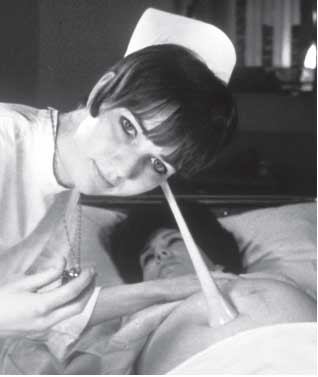When it comes to all matters of childbirth, we’ve come a long way, baby. Back in the day, monitoring your baby during labor didn’t look so slick. Here’s how things have changed as told by LawrenceD. Devoe, M.D., a professor and ob/gyn at the Medical College of Georgia in Augusta who’s been in practice 39 years.
Then
This prenatal stethoscope (at left) dates back to the 19th century, but a similar device was actually used into the 20th. It amplifies the sound of the baby’s heartbeat just slightly, so it worked only once a pregnancy was pretty far along, and the nurse had to use a stopwatch to count the beats she heard per minute. “All they could know is if the heart rate was slow, fast, or in between,” DeVoe says.
Now
“Now, it’s sort of like Wi-Fi,” DeVoe says. Information about baby’s heartbeat as well as the strength of contractions travels wirelessly from mother to monitor. “She can get up, walk around, comb her hair, use the bathroom, whatever,” he adds. New monitors even work while mom is laboring in a tub. And doctors with the right set-up can see what’s going on in L&D remotely, too.
Read more: Communal labor rooms, and other stories of giving birth abroad
